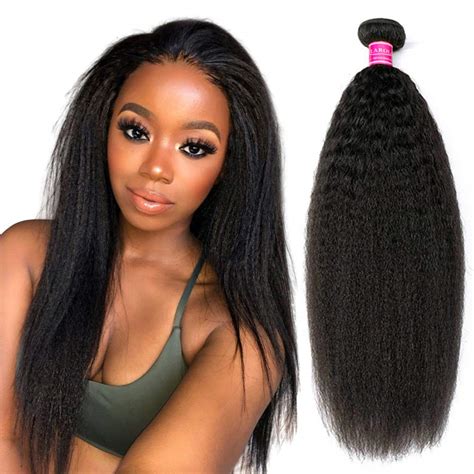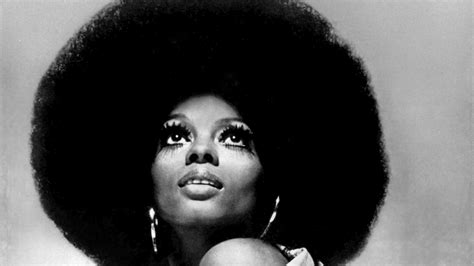From ancient African traditions to modern-day fashion trends, black women’s hair has a rich and multifaceted history. It is a symbol of identity, a source of pride, and a canvas for artistic expression. In recent years, the natural hair movement has gained prominence, encouraging women to embrace their natural curls and coils. However, the journey towards hair acceptance has not always been easy. This article explores the complexities of black women’s hair, from its historical significance to its role in contemporary society.

The Historical Roots of Black Women’s Hair
The history of black women’s hair can be traced back to the African continent. In many African cultures, hair was considered a sacred element that symbolized strength, fertility, and beauty. Different hairstyles were used to indicate social status, marital status, and religious beliefs. For example, the Wolof people of Senegal traditionally wore intricate braids called “maje” that were specific to each clan.
When Africans were brought to the Americas as slaves, their hair practices were often suppressed. Slave masters forced enslaved women to cut their hair short or cover it with headscarves to dehumanize them and control their appearance. Despite these restrictions, black women found ways to preserve their hair traditions through secret gatherings and the use of natural hair care products.
The Rise of the “Good Hair” Standard
During the Jim Crow era in the United States, the “good hair” standard emerged. This Eurocentric ideal promoted the idea that straight, flowing hair was beautiful, while kinky, curly hair was considered unkempt and undesirable. Black women were subjected to countless advertisements and social pressures that told them their natural hair was inferior. As a result, many women resorted to chemical hair straightening treatments and wigs to conform to this beauty standard.
The Natural Hair Movement
In the 1960s and 1970s, the natural hair movement gained momentum as part of the broader Black Power Movement. Black women began to embrace their natural hair textures as a symbol of pride and self-acceptance. The movement was fueled by the writings of authors such as Audre Lorde and Ntozake Shange, who challenged the Eurocentric beauty standards that had been imposed on black women.
Black Women’s Hair in the 21st Century
Today, black women’s hair continues to be a platform for self-expression and a source of cultural identity. Natural hair styles have become increasingly popular, with many women choosing to wear their hair in its natural state or in protective styles such as braids, twists, and locs. There has also been a growing movement to challenge the “good hair” standard and promote the acceptance of all hair textures.
The Health and Care of Black Women’s Hair
Maintaining healthy black hair requires unique care and attention. The natural texture of black hair often makes it prone to dryness and breakage. To promote hair health, it is essential to use gentle hair care products, avoid harsh chemicals, and maintain a regular hair care routine.
Strategies for Maintaining Healthy Black Hair
-
Use sulfate-free shampoos and conditioners to gently cleanse and moisturize your hair without stripping it of natural oils.
-
Deep condition your hair regularly with a nourishing hair mask to replenish moisture and repair damage.
-
Avoid excessive heat styling, as heat can damage the hair shaft and lead to breakage.
-
Protect your hair from the elements by wearing a hat or scarf when you are outdoors.
-
Eat a healthy diet rich in fruits, vegetables, and whole grains to promote overall hair health.
Tips and Tricks for Styling Black Women’s Hair
-
Use a wide-toothed comb to detangle your hair gently, starting from the ends and working your way up towards the roots.
-
Apply leave-in conditioner or hair oil to damp hair to define your curls and prevent frizz.
-
Use a styling gel or mousse to add hold and shine to your hairstyle.
-
Experiment with different braid patterns to create versatile and stylish looks.
-
Accessorize your hair with headbands, scarves, or hair jewelry to add a touch of flair.
Table 1: Popular Black Women’s Hairstyles
| Hairstyle | Description |
|---|---|
| Afro | A full, rounded hairstyle with tightly coiled curls that extend outward from the head. |
| Bantu Knots | Small, tightly coiled buns that are wrapped around the head. |
| Box Braids | Rectangular-shaped braids that are made by separating hair into small sections and braiding them together. |
| Cornrows | Tightly braided rows of hair that are created by braiding the hair close to the scalp. |
| Dreadlocks | Interlocked strands of hair that form long, rope-like strands. |
| Senegalese Twists | Two-stranded twists that are made by wrapping two strands of hair around each other. |
Table 2: Common Hair Care Problems and Solutions for Black Women
| Hair Care Problem | Solution |
|---|---|
| Dryness | Use moisturizing shampoos and conditioners, deep condition your hair regularly, and avoid sulfates and harsh chemicals. |
| Breakage | Handle your hair gently, use heat styling tools sparingly, and trim your hair regularly to remove split ends. |
| Frizz | Apply leave-in conditioner or hair oil to damp hair, and use a wide-toothed comb to detangle your hair gently. |
| Dandruff | Wash your hair regularly with an anti-dandruff shampoo, and use a scalp treatment to soothe irritation. |
| Scalp Irritation | Use gentle hair care products, avoid scratching your scalp, and consult a dermatologist if irritation persists. |
Table 3: Celebrity Black Women with Iconic Hair Styles
| Celebrity | Hairstyle |
|---|---|
| Beyoncé | Long, flowing waves |
| Rihanna | Short, cropped styles |
| Lupita Nyong’o | Natural Afro |
| Solange Knowles | Large, voluminous curls |
| Viola Davis | Short, pixie cuts |
| Zendaya | Edgy braids and cornrows |
Table 4: Hair Care Products Specifically Designed for Black Women
| Product | Description |
|---|---|
| SheaMoisture Curl & Shine Shampoo | A sulfate-free shampoo that gently cleanses and moisturizes curly hair. |
| Cantu Shea Butter Leave-In Conditioner | A deep conditioning leave-in conditioner that restores moisture and reduces frizz. |
| Ouidad Advanced Climate Control Heat & Humidity Gel | A styling gel that provides hold and shine while protecting hair from the elements. |
| Carol’s Daughter Hair Milk | A creamy hair milk that detangles, nourishes, and defines curls. |
| Pattern Beauty Leave-In Conditioner | A lightweight leave-in conditioner that provides hydration and definition to coily hair. |
Conclusion
Black women’s hair is a complex and multifaceted subject that is intricately woven into history, culture, and identity. From the ancient traditions of Africa to the challenges of the “good hair” standard, black women have consistently found ways to express themselves through their hair. Today, the natural hair movement is thriving, and black women are embracing their natural curls and coils with pride. By understanding the unique needs and challenges of black women’s hair, we can create a more inclusive beauty industry and celebrate the beauty and diversity of all hair textures.
